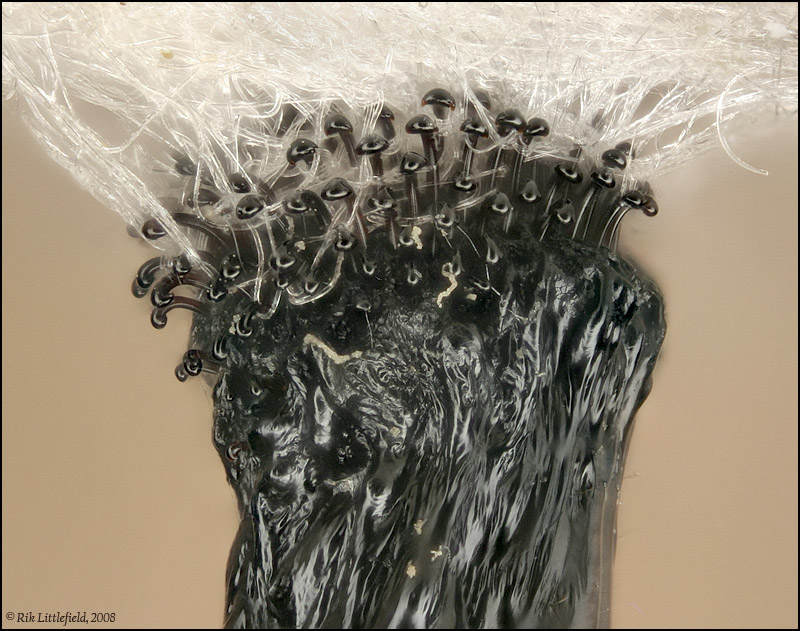Thanks for the comments, guys!
Harold, that's a great analogy. I've actually had discussions with colleagues about how to coat surfaces like this with a very fine matte texture. The goal there was to allow determining 3D shape by scanning. But as you say, applying those coatings is not easy, certainly not easy enough to do in an evening in my home workshop.
Diffuse lighting accomplishes much the same effect. Instead of making the mirror a little bit matte so that it would reflect incoming uni-directional light in all directions, we simply arrange for light to come from all directions to begin with, and let the mirror propagate that. The problem, as Craig points out, is that no light comes out of the objective, so the mirror shows a black hole there. I believe it could be a smaller black hole, though, with some reworking of the diffuser design.
Charles, yes indeed, natural Velcro, and in a truly life-and-death situation!
But the really fascinating part of this story is not shown in these photos. Perhaps you can imagine it.
Here's the situation. The caterpillar spins this silk mat. Then it works the hooks on its hind feet into the silk mat. It lets go with everything else and hangs there while the pupa develops inside the caterpillar's skin. The hooks that you see here are part of that pupa, and they form entirely
inside the old skin. Hold that thought.
Now, don't blink.
Oops, you blinked!
While you were blinking, the pupa emerged from the old skin, and while hanging without obvious support, worked its cremaster hooks into the silk mat, then knocked the old skin onto the ground underneath. How did it do that??!!
The problem is roughly akin to taking off your pants while wearing a straitjacket and hanging by your knees from an overhead bar. I've been able to watch the process only a couple of times. Getting good video of it is still way up on my list of lifetime goals.
Bing, yes, it's just stuck on the end of bellows. I have a set of largely DIY adapters to do that, but there are commercial equivalents also. For an illustration of the setup, see
here.
--Rik



